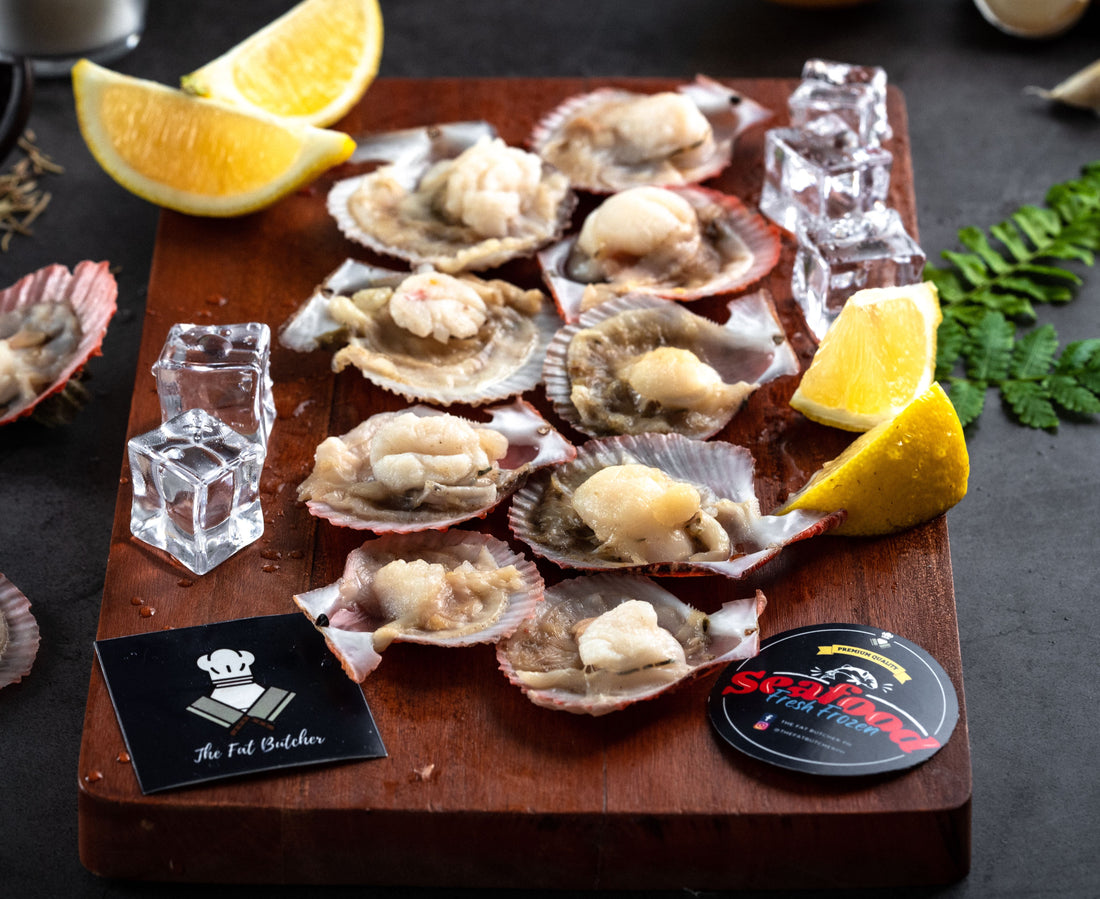
How to Spot Bad Scallops: A Guide to Ensuring Freshness and Quality
Share

Scallops are a delicacy loved by seafood enthusiasts around the world. With their tender texture and delicate flavor, scallops make for a delightful culinary experience. However, it's crucial to identify when scallops have gone bad to ensure both your safety and the overall enjoyment of your meal. In this blog post, we will explore the key signs that can help you spot bad scallops, allowing you to make informed decisions when purchasing and preparing this delectable seafood.
-
The Nose Knows: One of the most reliable ways to determine scallop freshness is through your sense of smell. Fresh scallops emit a mild, slightly sweet aroma reminiscent of the sea. However, if you detect a strong fishy or ammonia-like odor, it's a clear indication that the scallops have passed their prime and should be avoided.
-
The Touch Test: The texture of scallops can provide valuable clues about their quality. High-quality scallops possess a firm, slightly springy texture. When you gently press the scallop, it should bounce back. Avoid scallops that feel slimy, mushy, or excessively soft, as these are telltale signs of spoilage.
-
Color Considerations: Another visual cue is the color of the scallops. Fresh scallops typically have a creamy, off-white, or pale pink color. Be cautious if you notice scallops that appear yellowish, grayish, or have dark spots or discoloration. These could indicate that the scallops are no longer fresh and should be passed over.
-
Moisture Matters: Pay attention to the moisture around the scallops. Excessive liquid pooling in the packaging or oozing from the scallops themselves is a sign of potential spoilage. This liquid may have an unpleasant smell and is an indication that the scallops have started to deteriorate. Opt for scallops that are well-packaged and not swimming in liquid.
-
Expiration Date Awareness: Always check the expiration date on the packaging or consult with your fishmonger about the freshness of the scallops. If the scallops have exceeded their expiration date, it's best to steer clear of them. Freshness is paramount when it comes to seafood, and consuming expired scallops can pose health risks.
-
The Importance of Proper Handling and Storage: How scallops are handled and stored greatly affects their quality. Ensure that they have been stored at an appropriate temperature (chilled but not frozen) and have not been mishandled. Buy your scallops from reputable sources that prioritize proper storage and handling practices. This ensures a lower risk of spoilage and guarantees a higher quality product.
-
Origin and Sourcing: Consider the origin and sourcing of the scallops you plan to purchase. Opt for scallops that are sustainably sourced and come from reputable suppliers or trusted fishmongers. Higher-quality scallops are less likely to spoil quickly and have undergone strict quality control measures.
When you are sure that your scallops are top of the line, you might want to try these recipes using The Fat Butcher's Half Shelled Scallops: Baked Cheesy Scallops, Scallops Adobo, and Lemon Garlic Scallops.
Spotting bad scallops is crucial for a safe and enjoyable dining experience. By paying attention to the smell, texture, color, moisture, expiration date, handling and storage practices, as well as the origin and sourcing, you can make informed decisions when selecting scallops. Remember, it's always better to err on the side of caution and avoid consuming spoiled seafood. By following these guidelines, you'll be well-equipped to identify and choose the freshest, highest-quality scallops for your culinary adventures.
